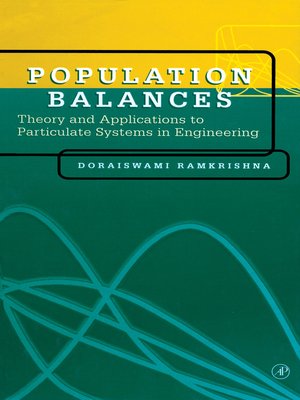Population Balances
ebook ∣ Theory and Applications to Particulate Systems in Engineering
By Doraiswami Ramkrishna

Sign up to save your library
With an OverDrive account, you can save your favorite libraries for at-a-glance information about availability. Find out more about OverDrive accounts.
Find this title in Libby, the library reading app by OverDrive.



Search for a digital library with this title
Title found at these libraries:
| Loading... |
Engineers encounter particles in a variety of systems. The particles are either naturally present or engineered into these systems. In either case these particles often significantly affect the behavior of such systems. This book provides a framework for analyzing these dispersed phase systems and describes how to synthesize the behavior of the population particles and their environment from the behavior of single particles in their local environments.
Population balances are of key relevance to a very diverse group of scientists, including astrophysicists, high-energy physicists, geophysicists, colloid chemists, biophysicists, materials scientists, chemical engineers, and meteorologists. Chemical engineers have put population balances to most use, with applications in the areas of crystallization; gas-liquid, liquid-liquid, and solid-liquid dispersions; liquid membrane systems; fluidized bed reactors; aerosol reactors; and microbial cultures.
Ramkrishna provides a clear and general treatment of population balances with emphasis on their wide range of applicability. New insight into population balance models incorporating random particle growth, dynamic morphological structure, and complex multivariate formulations with a clear exposition of their mathematical derivation is presented. Population Balances provides the only available treatment of the solution of inverse problems essential for identification of population balance models for breakage and aggregation processes, particle nucleation, growth processes, and more. This book is especially useful for process engineers interested in the simulation and control of particulate systems. Additionally, comprehensive treatment of the stochastic formulation of small systems provides for the modeling of stochastic systems with promising new areas of applications such as the design of sterilization systems and radiation treatment of cancerous tumors.






